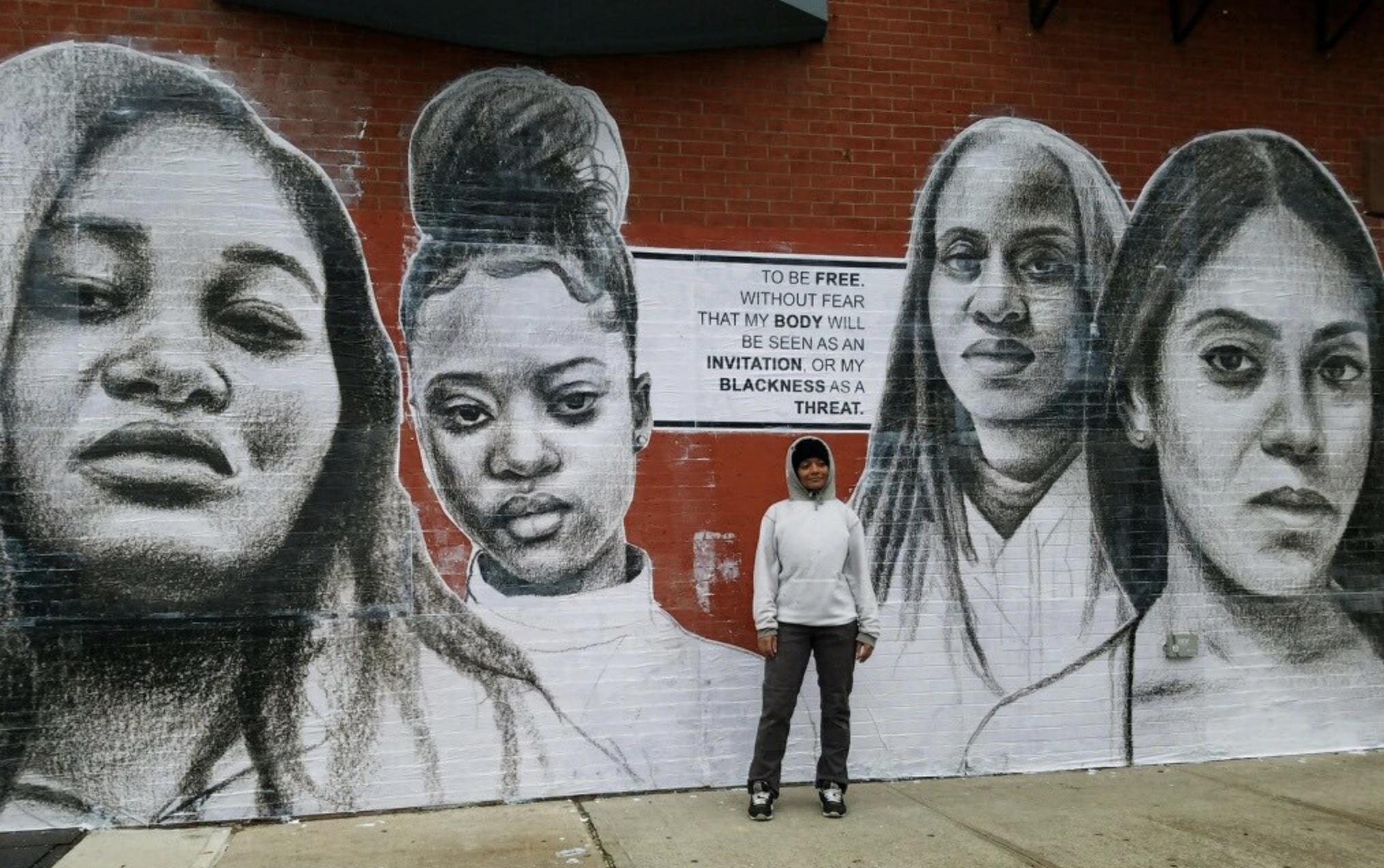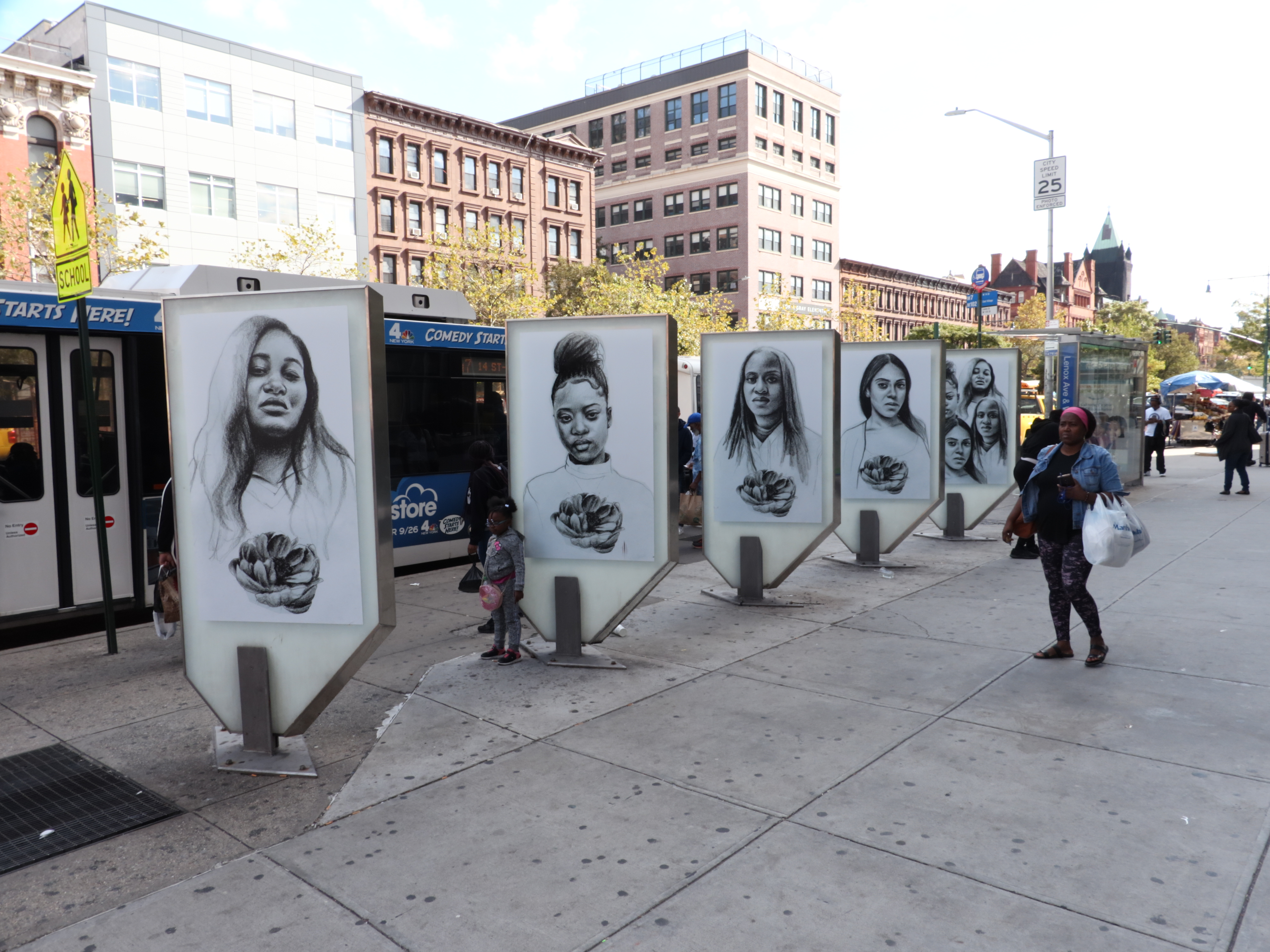Congratulations on the publication of Stop Telling Women to Smile (Seal Press). This is the culmination of a street art series you began in 2012. Tell us more.
 STWTS is an art project that aims to combat gender-based street harassment. I started the project with myself and two friends, handing out pieces of paper with images and text where we spoke back to men who had harassed us. The posters showing my friends’ faces each displayed a single sentence, like….
STWTS is an art project that aims to combat gender-based street harassment. I started the project with myself and two friends, handing out pieces of paper with images and text where we spoke back to men who had harassed us. The posters showing my friends’ faces each displayed a single sentence, like….
'My name is not baby, sweetie, sweetheart, shorty, sexy, honey, pretty, boo, ma.’
‘Women are not seeking your validation.’
'Stop Telling Women to Smile.'
(the text on my own self-portrait)
The project has grown to large-scale murals in cities across the country, and collaborations in cities around the world.

Has anyone ever harassed you WHILE making street art?
I have been harassed while painting murals, yes. One of the motivations to begin a street art series about street harassment came from working on mural projects in Philadelphia and being cat-called while painting.
We don’t often think of women working physical jobs outdoors—we tend to think of jobs like construction or sanitation work as being non-traditional for women. It’s a reason why the outdoor space is treated like a cis-hetero male occupied space, while women and femme passersby are treated like intruders who have to endure harassment to get by.
To be a woman who works outdoors feels like compounded harassment. I’m being sexually harassed while outdoors, but it’s also my workplace. I’m not able to just leave or walk away.
This project is almost a decade old. Were you surprised by the scale and breadth of responses?
When I began this project, I had an abstract idea of how it could grow. I was not expecting it to reach so many people so quickly, nor for it to elicit the response that it did. I knew that the treatment I was receiving in the street was not unique to me, but I did not know—and was not prepared for—the huge volume of women saying to me that that it was their experience too. The work began as my personal experience, but it quickly became a project about our collective experience, and the variation of experiences within that collective.
What’s up with strangers telling women to smile?
We are told to smile because people, in particular cis-hetero men, feel that they are entitled to a particular emotional presentation from women and femmes. We are supposed to look pleasant, approachable, nice: not for our own selves but for others. And when we don’t respond politely, or even gratefully, as seems to be expected of us, men often get indignant and then potentially angry and violent.
But we see this happen all over. Women politicians are criticized for looking too stern; little girls are taught to be nice otherwise they’ll be seen as a “bitch;” women and femmes working in customer service are expected to constantly grin. We are not allowed to express our full range of emotions and expressions without scrutiny, judgment, or directives.

I’ve heard you talk about how anger fuels your creativity. Can you elaborate?
I think making work out of anger is good. It is a legitimate emotion and if you’re angry about something you want to change it. Because women are told to hide our anger, our rage, I find it radical to unleash it and be loud about it.
You’re the first Public Artist in Residence for the New York City Commission on Human Rights. What did this entail?
My collaboration with the NYCCHR was an 18-month Public Artist Residency. I worked closely with the commission to develop public art pieces. These pieces addressed issues important to both myself and the Commission — sexual harassment and anti-Black racism. The beginning of the residency saw me working with organizations throughout the city to hold group discussions with particular groups of people: NAACP members in Queens, a group of QPOC (Queer People of Color) elders in Brooklyn, Black and brown teenage girls in the Bronx, etc. I also created postcards that the commission distributed throughout the city that prompted Black folks, women and femmes to answer questions about street harassment and anti-Black racism. The postcards and group discussions led to mural and public art installations along with drawings of the participants.


Learn more about Tatyana’s work here. Photos via the NYC Commission on Human Rights
